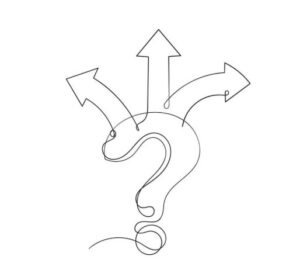Similarities Between Chinese and Japanese Languages:
An In-Depth LookThe Chinese and Japanese languages are two significant pillars of East Asian communication and culture. While they belong to different language families Chinese is part of the Sino-Tibetan family, and Japanese belongs to the Japonic family—they share intriguing similarities due to centuries of interaction.
At Quadrate Translation Company, we specialize in unraveling these complexities, delivering accurate and culturally sensitive translations.
1. Writing Systems
Hanzi and Kanji One major similarity between Chinese and Japanese lies in their writing systems. Both languages use logographic characters, although with some differences. Chinese Writing (Hanzi): The Chinese script consists of characters where each symbol represents a word or morpheme. These characters are logographic, meaning they convey meaning rather than sound.
At Quadrate Translation Company, we ensure that these variations are considered during translation, preserving both meaning and context.
2. Vocabulary
Borrowed Words (Kango) Another clear overlap is in vocabulary. Over centuries, Japanese has borrowed extensively from Chinese, particularly during the Tang Dynasty. These borrowed words, known as kango, form a significant part of Japanese vocabulary today. For example, words like 学校 (gakkō, “school”), 電話 (denwa, “telephone”), and 文化 (bunka, “culture”) were adapted from Chinese. On the other hand, some modern Chinese terms originated from Japanese coinages, such as 電子 (diànzǐ, “electron”). This mutual exchange of words highlights their historical connection.
At Quadrate Translation Company, we handle such vocabulary with care, ensuring that the intended meaning is conveyed accurately in both languages.
3. Grammar
Sentence Structure and Particle Japanese: 私は本を読む (Watashi wa hon o yomu) – “I read a book.” Chinese: 我读书 (Wǒ dú shū) – “I read a book.” However, Chinese grammar is more flexible and sometimes shifts to subject-verb-object (SVO) in informal contexts. Particles: Both languages use particles to indicate grammatical relationships. In Japanese, particles like は (wa) and を (o) are crucial. Similarly, Chinese uses structural markers like 的 (de) and 了 (le).
At Quadrate Translation Company, we understand the importance of these grammatical nuances, ensuring that translations are both precise and natural.
4. Honorific Systems
Reflecting Respect In Chinese: Titles such as 老师 (lǎoshī, “teacher”) or 先生 (xiānshēng, “Mr.”) serve a similar purpose. While modern Mandarin honorifics are simpler, classical Chinese had more elaborate forms. These cultural elements are deeply rooted in both languages.
At Quadrate Translation Company, we ensure that honorifics are used appropriately, respecting cultural norms and context.
5. Tonal and Pitch Accent Systems
Though their phonological systems differ, both languages rely on pitch or tone to convey meaning.
At Quadrate Translation Company, we ensure that these tonal and pitch differences are carefully addressed, particularly in spoken translations or transcriptions.
6. Cultural and Historical Influence
The similarities between these languages are not coincidental. They stem from centuries of cultural exchange, with China influencing Japan’s script, vocabulary, and even philosophical ideas. For example, during the introduction of Buddhism, many Chinese terms entered Japanese. Over time, these words were adapted, forming a bridge between the two cultures.
At Quadrate Translation Company, we honor this shared history, crafting translations that respect both cultural traditions.
Key Takeaways
Shared Elements: Both languages share similarities in writing systems, vocabulary, and cultural elements like honorifics.
Unique Traits: Despite these overlaps, Chinese and Japanese retain distinct grammar, phonology, and usage patterns.
Expert Translations: At Quadrate Translation Company, we harness these insights to deliver seamless translations that preserve meaning and cultural context. By exploring the similarities between Chinese and Japanese, we deepen our appreciation for their shared heritage.
Whether you need translations for business, literature, or technology, Quadrate Translation Company is your trusted partner for navigating the linguistic connections between these fascinating languages.
Discover the Similarities Between Chinese and Japanese Languages
Chinese and Japanese, two prominent East Asian languages, have captivated linguists and enthusiasts alike due to their shared elements and cultural connections. Despite originating from different linguistic families—Chinese belongs to the Sino-Tibetan family and Japanese to the Japonic family—their historical interactions have led to intriguing similarities.
At Quadrate Translation Company, based in Chennai, India, we specialize in Chinese and Japanese translations, helping businesses and individuals bridge language barriers with precision and cultural sensitivity.
Why Choose Quadrate Translation Company for Chinese and Japanese Translations?
 If you are in Chennai or anywhere in India, Quadrate Translation Company is your trusted partner for professional Chinese and Japanese translations.
If you are in Chennai or anywhere in India, Quadrate Translation Company is your trusted partner for professional Chinese and Japanese translations.
Expert Linguists: Our team comprises skilled translators proficient in Chinese, Japanese, and English, ensuring linguistic accuracy.
Cultural Sensitivity: We recognize the cultural nuances of both languages, delivering translations that go beyond mere words.
Wide Range of Services: From business documents to technical manuals and creative content, we provide tailored solutions to meet your needs.
Whether you’re a business expanding to East Asian markets or an individual seeking precise translations, Quadrate Translation Company is here to help you succeed.
Conclusion
The similarities between Chinese and Japanese languages, from their writing systems to shared vocabulary and cultural influences, highlight a deep historical connection. Yet, their distinct grammar, sound systems, and modern evolutions underscore their individuality.
At Quadrate Translation Company, we combine linguistic expertise with cultural awareness, offering translations that are accurate, meaningful, and contextually appropriate. Whether for business, literature, or technology, we are your trusted partner in bridging the gap between these two fascinating languages.

